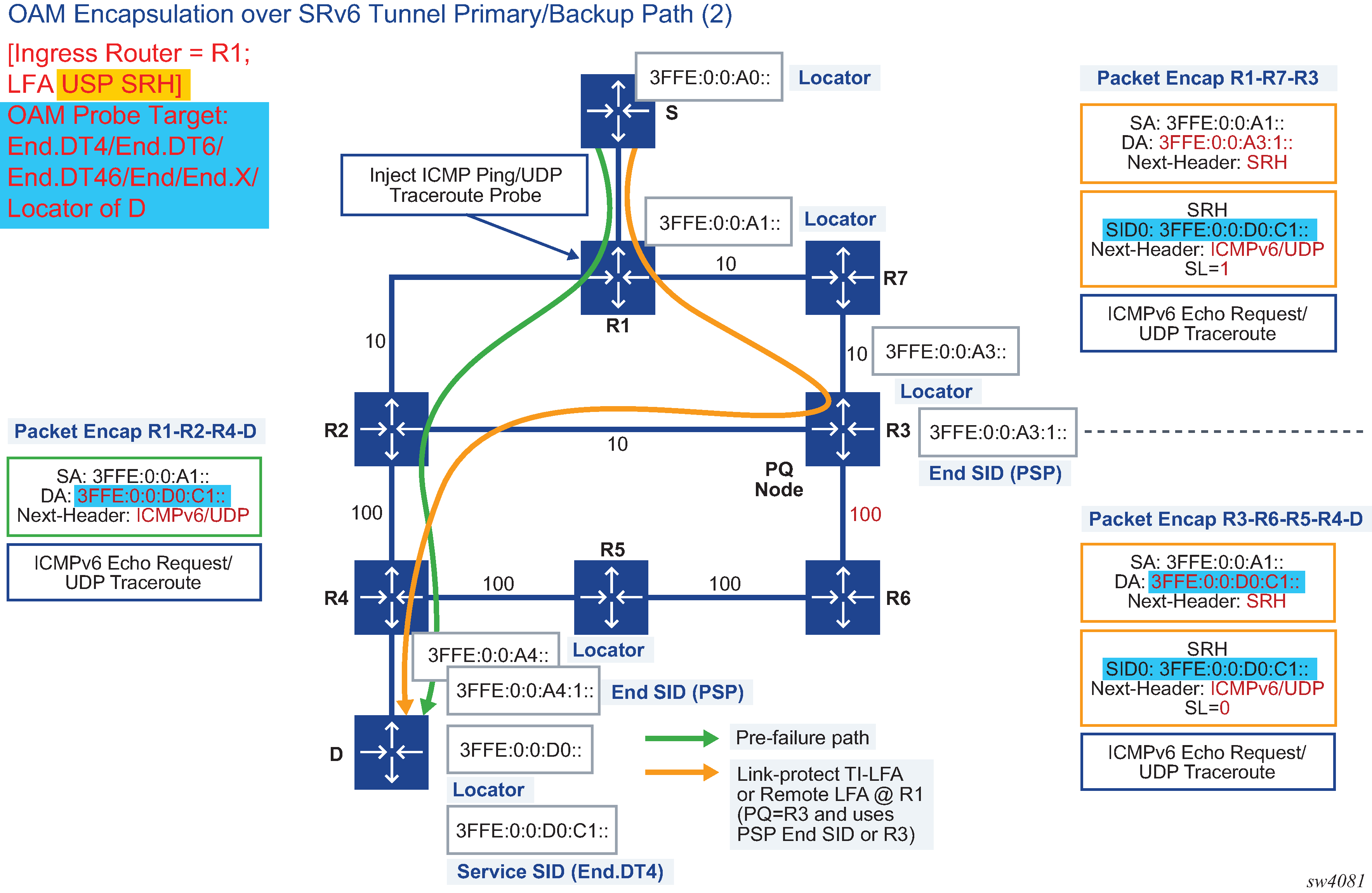The data path in the ingress network port in the destination router that owns the target SID extracts the packet to CPM.
A traceroute packet is extracted based on the hop-limit field value of 1 before the route lookup.
A ping packet is extracted after the route lookup matches a FIB entry of a local locator, End, or End.X SID.
The CPM checks that the target locator or SID address matches a local entry. This means that the locator or SID has either been configured manually by the user or it has been auto-allocated by the locator module for use by IS-IS or BGP.
A match on the locator requires an exact match on the locator field and that both the function and argument fields be zero.
A match on a SID requires both the locator and function fields to match. The argument field is not checked.
When a match on a local locator or SID exists, the CPM replies with the following:
-
in the case of ICMPv6 ping
CPM replies with an ICMPv6 echo reply message.
The source address of the packet is set to the address in the DA field of the packet of the received echo request message.
-
in the case of UDP traceroute
CPM replies with an ICMPv6 message (Type: ‟Destination unreachable”, Code: ‟Port Unreachable”).
The source address is set to the system IPv6 address if configured or the address of the interface used to forward the packet to the next hop.
The target node copies into the payload of the reply message the leading bytes (up to 128 bytes) in the received packet encapsulation, and which include the outer IPv6 header and the SRH if any.
The responder node copies into the payload of the reply message the leading bytes (up to 128 bytes) in the received packet encapsulation, and including the outer IPv6 header and the SRH, if any.
When the traceroute is carried over a TCP transport and the destination is not an interface address, there is no indication whether the TCP port is open or closed.
Figure: End-to-end packet encapsulation for ping or traceroute of a remote locator or SID (1) and Figure: End-to-end packet encapsulation for ping or traceroute of a remote locator or SID (2) illustrate the packet encapsulation from ingress PE to egress PE for both the primary path and the backup path. For the backup path, both the PSP and USP types of the LFA SRH are shown.

